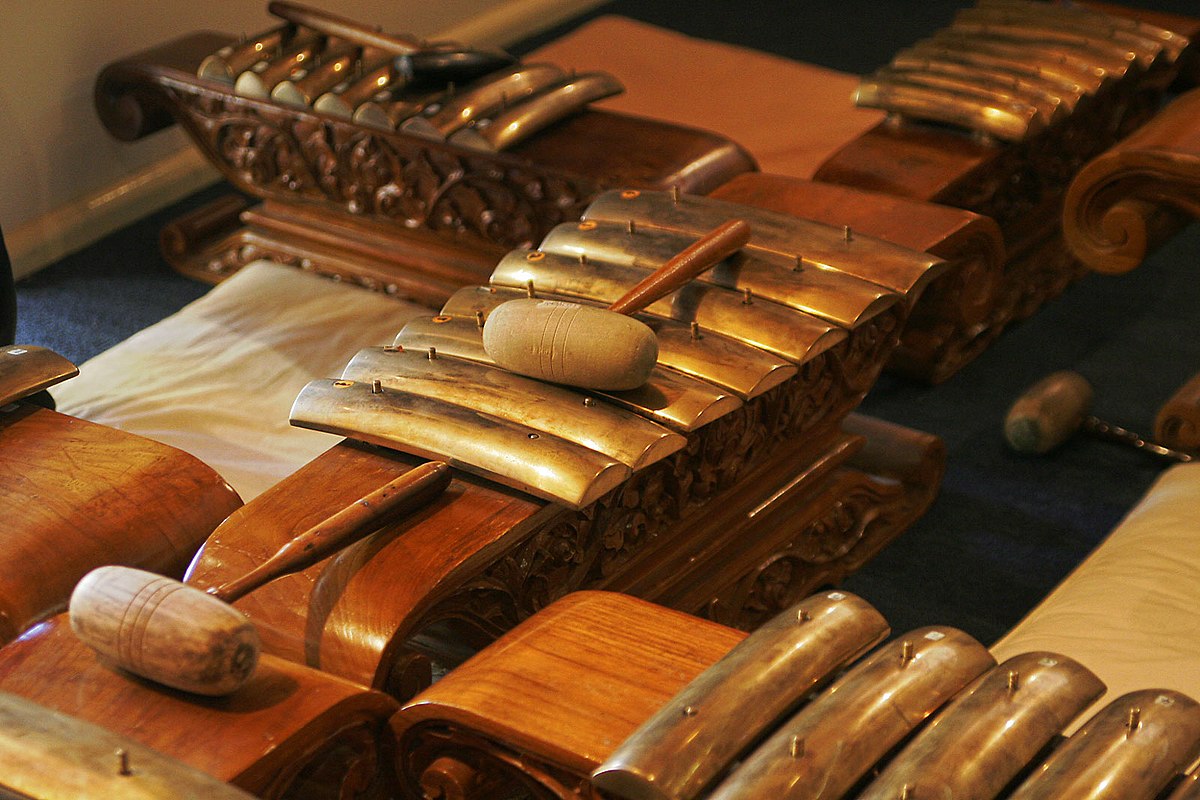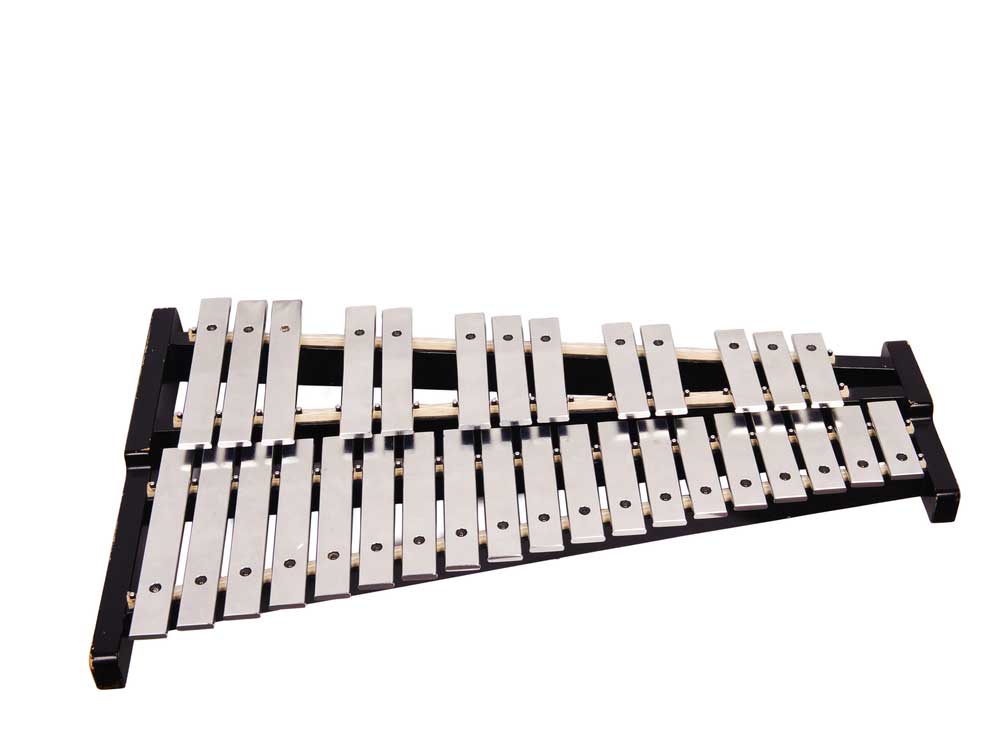Metallophone
Melodic Percussions
Europe
Between 1001 and 1900 AD
Video
The metallophone is a unique and captivating percussion instrument that has been an integral part of various musical traditions across the globe. Known for its bright, resonant tones, the metallophone is often used to create melodies and harmonies in both ensemble and solo settings.
Description and Features
A metallophone is defined as a musical instrument consisting of tuned metal bars that produce sound when struck with mallets. The bars are usually arranged in a keyboard-like layout, similar to a piano, allowing musicians to play melodies easily. The sound produced by the metallophone is characterized by its bright and ringing quality, making it a popular choice in various musical contexts. Metallophones can be made from different metals, including aluminum, bronze, and steel. Each material imparts unique tonal qualities to the instrument. For instance, aluminum bars tend to produce a clearer and brighter sound, while bronze may offer a warmer tone. The bars are carefully tuned to specific pitches, allowing for accurate musical performance. One notable feature of the metallophone is its resonator box. This box is placed beneath the metal bars and amplifies the sound produced when they are struck. The combination of the tuned bars and resonator box creates a rich auditory experience that captivates listeners.
History and Origin
The origins of the metallophone can be traced back thousands of years to Southeast Asia. Traditional gamelan ensembles in Indonesia prominently feature metallophones such as the saron and gendèr. These instruments have been used in cultural ceremonies and celebrations for centuries. The earliest known metallophones were made from bamboo or wood before transitioning to metal as craftsmanship advanced. By the 7th century, similar instruments began appearing in China. The metallophone gained popularity in Europe during the 18th century when it was adopted into orchestral music.In the 20th century,
Carl Orff’s pedagogical approach introduced diatonic metallophones into music education. His method emphasized active music-making through movement and play, leading to increased interest in these instruments within classrooms worldwide. Today, metallophones are celebrated not only for their historical significance but also for their adaptability across various musical genres—from classical to jazz to contemporary world music.
Working Mechanism
The working mechanism of a metallophone involves striking its metal bars with mallets to produce sound. Each bar is tuned to a specific pitch; when struck, it vibrates at that frequency, creating a musical note. The resonator box beneath each bar amplifies these vibrations, enhancing the overall sound quality.Players can manipulate dynamics by varying their striking force or using different types of mallets. Softer mallets produce warmer tones while harder mallets yield brighter sounds. Additionally, players can create different effects by using techniques such as rolling or gliding their mallets across the bars.The construction materials significantly influence the instrument’s sound. For instance, aluminum bars tend to produce clearer tones compared to wooden bars found in other percussion instruments like xylophones.
Types of Metallophones
Metallophones can be categorized into several types based on their design and usage:
- Gamelan Metallophones: These include traditional instruments like saron and gendèr used in Indonesian gamelan ensembles.
- Orchestral Metallophones: Instruments designed for use in orchestras that typically have a wider range of pitches.
- Educational Metallophones: Often diatonic in tuning; these instruments are used in music education settings to teach rhythm and melody.
- Solo Metallophones: Smaller versions designed for solo performance with limited pitch ranges compared to orchestral models.
Each type serves specific roles within musical contexts while contributing uniquely to overall sound.
Uses of Metallophones
Metallophones have diverse applications across various musical genres:
Traditional Music: In gamelan ensembles, metallophones play essential roles in creating intricate melodies and harmonies.
Classical Music: Orchestras utilize metallophones for their bright tones and ability to blend with other instruments.
Jazz: Many jazz musicians incorporate metallophones into their performances for added texture.
Education: Diatonic metallophones are commonly used in schools to teach musical concepts through hands-on experience.
Contemporary Music: Modern composers have begun integrating metallophones into various genres for unique sonic textures.
Significance of Metallophones
The significance of metallophones extends beyond their musical capabilities; they represent cultural heritage and community identity within various traditions. As instruments deeply rooted in history—stemming from ancient practices—their continued use showcases resilience through creativity. In educational contexts, learning how to play metallophones fosters appreciation for diverse musical cultures while enhancing students’ rhythmic skills and coordination. Moreover, as global interest grows around world music traditions—metallophones serve as powerful tools for bridging cultural gaps through shared experiences among diverse audiences.
In conclusion, whether resonating through traditional ceremonies or adding depth to modern compositions—the metallophone remains an enduring symbol not only within specific cultural contexts but also across global musical landscapes
FAQ
What is the composition of a metallophone musical instrument?
A metallophone is a percussion instrument consisting of a series of metal bars, each tuned to a specific pitch. The bars are typically made from materials such as steel, brass, or aluminum. The instrument is played by striking the bars with mallets, producing a bright, resonant sound. The bars are often arranged in a keyboard-like layout, similar to a xylophone, but with metal instead of wooden bars.
What is the origin of the metallophone musical instrument?
The metallophone has its origins in Southeast Asia, where it was used in traditional music. Its design and usage are closely linked to various cultures, such as Indonesian gamelan ensembles and Thai classical music. Over time, metallophones spread globally, and modern versions are now used in various musical genres, including Western orchestras and educational settings.
What are the types of metallophone musical instruments?
Metallophones come in various forms, including orchestral metallophones, which are used in Western classical music, and traditional metallophones, which are part of Southeast Asian gamelan ensembles. Other types include the chromatic metallophone, which covers a full range of pitches, and the diatonic metallophone, used in educational settings or folk music for its simplified pitch structure.
 Links
Links
References
Other Instrument
Categories



















